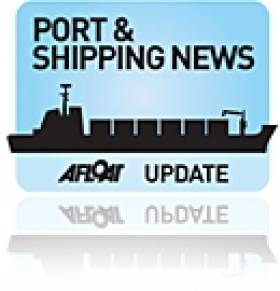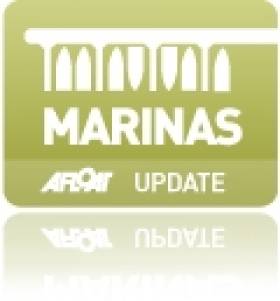Displaying items by tag: waterford city marina
#PortofWaterford – A port snapshot of shipping activity on Waterford Estuary this morning revealed an eclectic range of vessels between the city-centre quays to the open sea, writes Jehan Ashmore.
Departing the city where a pair of Royal Navy 'Archer' class fast-patrol cadet training boats, HMS Pursuer (P273) led by HMS Charger (P292). The sisters had visited the 100-berth Waterford City Marina on the historic quays providing easy access to visitors to Ireland's oldest city established by the Vikings.
As the naval pair departed downstream off The Island (Waterford Castle Hotel) they met the inbound Katrion, a 38m long luxurious motoryacht. The 10-guest capacity vessel built by Dutch yard Feadship had visited Glengariff as reported and subsequently Kinsale.
She completed her passage to moor at Merchants Quay along the city's mile long quay, described by the eminent architectural historian, Mark Girouard, as "the noblest quay in Europe".
Larger vessels such as Atlantic M a livestock-carrier is docked at Belview Container Terminal, the main port of Waterford. She trades to Libya along with sister Express 1 which as previously reported was detained in the UK earlier this year.
The Port of Waterford offers an inter-modal connection at Belview as Irish Rail (Iarnród Éireann) freight-trains from Ballina, Co. Mayo make an onward link to northern Europe through 'liner' shipping services operated by DFDS Logistics to Rotterdam.
The rail-sea service was re-launched in early 2013 and a year later the inter-modal service has been hailed a success according to Irish Rail.
To maintain sufficient depths the port has contracted the WD Mersey which is carrying out dredging work off Cheekpoint where the confluence is of the rivers Suir and Nore.The dredged spoil is disposed further downriver offshore of Dunmore East.
Wind Surf, a four-masted cruiseship is scheduled to call by anchoring in the harbour mouth offshore of Dunmore East on 11 July.
Waterford City Marina. Yacht & Boat Berths & Storage in Waterford
Waterford City is famous for its connections with Waterford Crystal, manufactured in the city centre. Waterford is the capital of the south east region of Ireland. As a major city, it benefits from good rail links with Dublin, and Limerick, a regional airport with daily flights to Britain and an extensive bus service to surrounding towns and villages. The marina is found on the banks of the River Suir, in the heart of this historic Viking city dating back to the ninth century. Yachtsmen can make the most of Waterford's wide range of shops, restaurants and bars without having to walk too far from their boats. With 150 fully serviced berths and first rate security, Waterford City Marina now provides shower, toilet and laundry facilities in its new reception building.
Waterford City Marina, Waterford.
Tel: 00353 87 238 4944 Fax: 00353 51 849763
Email: [email protected]
VHF: Ch 12
Access H24

























































